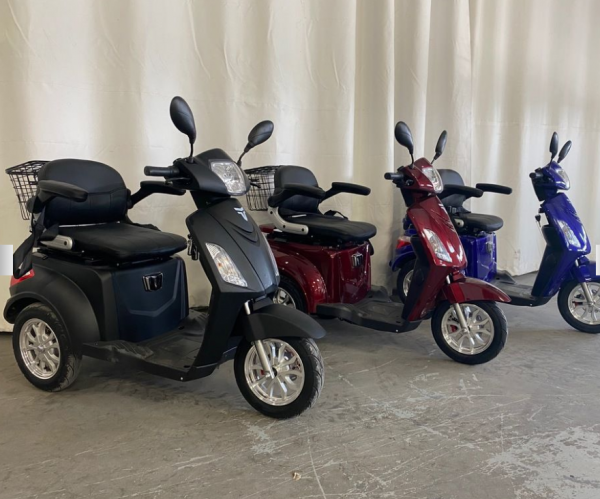Mobility scooters can be a game-changer for individuals with mobility challenges. Whether you’re dealing with age-related limitations or a disability, finding the right mobility scooter can significantly enhance your independence and quality of life. However, with various options available in the market, selecting the perfect one can be a daunting task. In this guide, we’ll walk you through the essential factors to consider when choosing the right mobility scooter for your needs.
- Assess Your Mobility Needs
The first step in selecting a mobility scooter is to evaluate your specific mobility requirements:
- Indoor or Outdoor Use: Determine whether you primarily intend to use the scooter indoors, outdoors, or a combination of both. Some scooters are designed for maneuverability indoors, while others excel in outdoor terrain.
- Travel Considerations: If you plan to travel frequently with your scooter, look for models that are easily transportable. Consider the scooter’s weight, dimensions, and whether it can be disassembled for transportation.
- Weight Capacity: Ensure the scooter you choose can safely support your weight and any additional items you might carry.
- Type of Mobility Scooter
There are three main types of mobility scooters to choose from:
- Travel Scooters: These are compact and lightweight, ideal for portability. They’re perfect for short trips and can be easily disassembled for transportation.
- Mid-Size Scooters: These offer a balance between indoor and outdoor use. They provide more stability and comfort than travel scooters and often have a higher weight capacity.
- Heavy-Duty Scooters: Designed for rugged outdoor use, heavy-duty scooters can handle various terrains and have a higher weight capacity. They provide excellent stability and comfort.
- Battery Life and Range
Battery life and range are critical factors to consider, especially if you plan to use your scooter for extended periods. Look for scooters with batteries that can last your desired distance without needing frequent recharging. Additionally, consider the availability of spare batteries or charging options for added convenience.
- Comfort and Ergonomics
- Ensure the scooter’s seat is comfortable and supportive. It should be adjustable to accommodate your height and provide proper lumbar support.
- Check the scooter’s suspension system, as this greatly impacts ride comfort, especially on uneven terrain.
- Controls and Maneuverability
- Test the scooter’s controls to ensure they are easy to use and accessible. Some scooters feature tiller-style steering, while others use handlebars.
- Check the scooter’s turning radius, especially if you’ll be using it indoors. A smaller turning radius provides better maneuverability in tight spaces.
- Safety Features
- Look for safety features like lights, reflectors, and a horn for visibility and communication with others.
- Some scooters have additional safety features, such as anti-tip wheels or speed limit controls, which can be crucial for added security.
- Warranty and Service
- Investigate the warranty offered by the manufacturer. A good warranty can provide peace of mind and cover repairs or replacements if needed.
- Consider the availability of local service centers or technicians who can assist with maintenance and repairs.
Conclusion
Choosing the right electric mobility scooter is a significant decision that can greatly improve your daily life. By assessing your specific needs, understanding the different types of scooters, and considering factors like battery life, comfort, and safety features, you can make an informed choice. Remember to test-drive scooters whenever possible and consult with healthcare professionals or mobility experts for personalized guidance. With the right mobility scooter, you can regain your independence and enjoy greater mobility and freedom.
